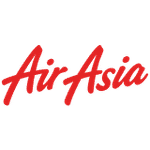Navigating the Heart of Seoul: Exploring the Seoul Metro Subway

Seoul Metropolitan Subway is a metropolitan railway system consisting of rapid transit, light metro, commuter rail, and people mover lines located in northwest South Korea. It serves most of Seoul metropolitan areas, such as Incheon metropolis and satellite cities in Gyeonggi Province. The lines also stretch out beyond the metropolitan areas to rural areas in northern Chungnam Province and western Gangwon Province. Line 1 was first opened in 1974 and kept being expanded to Line 9 in 2009. Known for its safe, convenient, and inexpensive services, Seoul Metropolitan Subway is a popular public transport among locals and tourists. Today, this subway carries many advantages for people’s mobility throughout the cities in Seoul. If you’re one of the people wishing for a trip/vacation in Seoul, this is the right time for you to learn the Seoul Metro system to get around the city; the info is explained below:
How to Use Seoul Metro Subway
yllyso / Shutterstock.com
Using Seoul Metro Subway is relatively easy; here are several steps for you to roam around the city by subways:
Where to Buy Seoul Metro Card
Shutterstock.com
Seoul Subway card system, called T-money, is a rechargeable plastic card you can use to pay for public transports, like buses, subways, and taxis. The card can be used in Seoul and most provinces in South Korea. You’ll get 0.076 USD as you use your T-money to pay for buses and subways travels. There’s also no extra charge to transfer between bus and subway lines as long as it takes place in 30 minutes.
The T-money cards can be easily found at several convenient stores, like 7 Eleven, CU, or GS 25; and subway ticket booths. Some of them are usually available in the airport terminals. The card costs 1.90 USD, unless you purchase tourist T-money cards; it costs 3.03 USD. You have to load it with additional fares to pay for your rides.
Seoul Metro Subway Stations
Seoul Metro Subway features 23 lines in total with 768 stations spread throughout the city. There are, at least 6, subcategories of Seoul Metro Subway stations: metro stations in South Chungcheong Province, Gangwon Province, Gyeonggi Province, Incheon, Seoul, and Seoul metro station tubs.
Seoul Metro Subway Operating Hours
The Seoul Metro Subway operates from 5.30am to 12am/1am, yet several train lines close before 1am. Therefore, pay attention to the announcements delivered in each station to avoid some transport problems.
Seoul Metro Subway Lines
Seoul Metro operates subways with 9 lines covering the city and its surrounding areas. Below is the map of the Seoul Metro Subway, along with the explanation of each line’s area coverage:
Source: Visitseoul.net
Comprising multiple lines, Seoul Metro Subway lines are distinguished by colors and numbers on each line. Here’s a brief summary of the lines:
Hotels near Seoul Metro Subway Stations
If you plan to have a hassle-free trip to Seoul, besides taking metro subways to get you around the city, you can consider staying near the stations to easily catch up with the train schedules. Here are some recommended hotels near the subway stations:
1. InterContinental Hotels ALPENSIA PYEONGCHANG RESORT, an IHG Hotel
This is one of the luxury hotels in Gangwon, equipped with many facilities in its spacious rooms. Other amenities, like pools, fitness center, and tennis area are also available in this hotel. Additionally, you can do another sport activity outside the hotel, since SKY72 Golf Club is just a stone’s throw away from the hotel.

InterContinental Hotels ALPENSIA PYEONGCHANG RESORT, an IHG Hotel





•

8.9/10
325 Solbong-ro, Daegwallyeong-myeon, Pyeongchang-g
RM 1,159
RM 1,025
Howard Johnson by Wyndham Incheon Airport
Howard Johnson by Wyndham Incheon Airport is a 4-star hotel situated in Incheon. Besides complete public facilities, this hotel offers shops, gardens, pools, and other entertainment amenities for guests’ recreations. Its location close to a golf club also allows the guests to have another kind of sport outside the hotel.

Howard Johnson by Wyndham Incheon Airport





•

9/10
6, Sindosinam-ro 142beon-gil,Jung-gu
RM 294
RM 259
Fairmont Ambassador Seoul
Placed in the heart of Seoul, Fairmont Ambassador is a splendid accommodation in the city, providing various sumptuous amenities. If you seek lavish and perfect staying experience in Seoul, consider this hotel to be the first thing on your list. You can also explore Yeouido Hangang Park near the hotel to enjoy your Seoul’s trip to the fullest.

Fairmont Ambassador Seoul





Fairmont Ambassador Seoul,108 Yeoui Daero Yeongdeungpo Gu
RM 3,040
RM 2,280
Attractions Accessible via Seoul Metro
Now that you understand how to use the subway and locate the routes, the next thing to grasp is listing several attractions which can be reached by the Seoul Metro Subway. Here are several recommended attractions passed by the subway lines:
1. Lotte World Theme Park
MEzairi / Shutterstock.com
Lotte World Theme Park is the largest indoor amusement park in Korea. It’s a complex life space where you can find all the joys. There are a wide range of attractions in this park, varying from entertaining to educational purposes, such as Lotte World Adventure, Folk Museum, Ice Rink, Seoul Sky, and Aquarium. Located in Songpa-gu, Seoul, this park is accessible via subways on Line 8.

Lotte World Theme Park

8.7/10
RM 177
RM 90
2. Gyeongbokgung Palace
Shutterstock.com
If you’re interested in the city’s cultural immersion, you can stop by the Gyeongbokgung Palace–within Line 3 area coverage. It symbolizes Korea’s rich history, particularly the Joseon Dynasty. It allows tourists to gain a deeper understanding of the city’s royal heritage and cultural traditions.
3. Noryangjin Fish Market
Tupungato / Shutterstock.com
Noryangjin is the largest seafood market in Korea, so if you’re a seafood lover, here’s your place to go to. The rows of seafood tanks aren’t only for exhibits, but you can also get them cooked up. Go to restaurants upstairs, then tell how your seafood wants to be prepared: steamed, grilled, raw, etc–all’s at your disposal. To get here, hop on Line 1 and 9 of the subway.
Flight to Seoul
Sun, 18 Jan 2026

AirAsia X
Kuala Lumpur (KUL) to Seoul (ICN)
Start from RM 480.62
Thu, 8 Jan 2026

AirAsia Berhad (Malaysia)
Kota Kinabalu (BKI) to Seoul (ICN)
Start from RM 425.03
Mon, 5 Jan 2026

T’way Air
Singapore (SIN) to Seoul (ICN)
Start from RM 578.18
Seoul Metro Subway offers the perfect way to travel around Seoul and explore the multitude of attractions and charms the city has to offer. Imagine, all of this is made possible with just one single card! Now, grab the maps, book your flight to Seoul, get on the train, and prepare for a thrilling adventure ahead!
Tags:
metro subway
seoul
Flights Featured in This Article

Recommended Articles

The Unique Accomodations In South Korea, Feel It!

Seoul Itinerary: 5-Day Urban Adventure in South Korea's Capital

A Journey Through Traditional Activities in Seoul

Top Areas to Stay in Seoul: Enjoy Your First Time Holiday in Korea!

A Quick Guide to Busan to Seoul Flight: Distance, Airlines and Ticket Prices

7 Days in Seoul Itinerary: Complete Guide To A Captivating Adventure
Explore the Best of Seoul

Seoul

Myeongdong

Gangnam-gu

Dongdaemun-gu



















 Facebook
Facebook Instagram
Instagram TikTok
TikTok Youtube
Youtube Twitter
Twitter Telegram
Telegram
